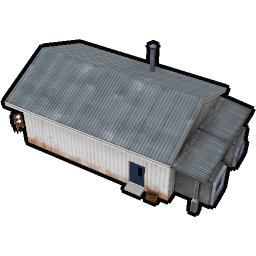Difference between revisions of "Food Market"
m (Add other variants of settlement buildings) |
m |
||
| Line 1: | Line 1: | ||
{{Infobox machine | {{Infobox machine | ||
| Name = Food Market | | Name = Food Market | ||
| Tier = | | Tier = 1 | ||
| Description = Provides [[Food]] for attached [[settlement]]. A settlement needs to have at least one Food Market attached otherwise its population will starve. | | Description = Provides [[Food]] for attached [[settlement]]. A settlement needs to have at least one Food Market attached otherwise its population will starve. | ||
| Recipe = | | Recipe = | ||
Revision as of 20:59, 21 June 2022

| Construction | |
| Workers | |
| Electricity | None |
| Maintenance | None |
| Footprint | 11x7 |
| Cargo | Food |
| Storage | 400 |
| Required Research | None |
| Designation | Housing & Services |
| Variants | Food Market II Transformer Water Facility Household Goods Module Household Appliances Module Household Electronics Module Waste Collection Recyclables Collection Biomass Collection Clinic |
The Food Market is a housing module which allows for the storage of a single type of Food (such as Potato, Vegetables) and its automatic distribution to the Population. The Food Market must be placed adjacent to Housing (or one of its variants) and the available locations are outlined in lime green during placement.
While placing multiple Food Markets does not make Food distribution any faster or more efficient, it does allow for more Food to be stockpiled as well allow for larger crop harvests to be stored without overflowing which can be required when operating a higher Population levels. As Food does stays fresh and edible indefinitely, building and filling additional Food Markets is highly recommended to provide a safety buffer before experimenting with new crop rotations.
| |
| |
| Planned or Proposed | |
| * Only available in the Supporter Edition | |